December 2009 lunar eclipse
| Partial Lunar Eclipse December 31, 2009 | |
|---|---|
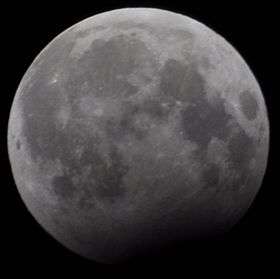 Near max. eclipse from Munster, Ireland | |
 The southern edge of the moon will completely darken as the moon moves through the Earth's umbral shadow | |
| Series (and member) | 115 (57 of 72) |
| Duration (hr:mn:sc) | |
| Partial | 0:59:58 |
| Penumbral | 4:11:03 |
| Contact times (UTC) | |
| P1 | 17:17:08 |
| U1 | 18:52:43 |
| Greatest | 19:22:39 |
| U4 | 19:52:41 |
| P4 | 21:28:11 |
 The moon's hourly motion across the Earth's shadow in the constellation of Gemini | |
A partial lunar eclipse was visible on New Year's Eve, December 31, 2009. It was the last and largest of four minor lunar eclipses in 2009. This lunar eclipse is also notable, because it occurred during a blue moon (a second full moon in December). The next eclipse on New Year's Eve and blue moon will occur on December 31, 2028.
Only a small portion of the Moon entered the Earth's umbral shadow, but there was a distinct darkening visible over the Moon's southern surface at greatest eclipse.
Visibility
It was visible from all of Africa, Europe, Asia, Middle East and Australia. In the Philippines, the lunar eclipse was started last January 1, 2010, when it was very visible at mid-dawn until before sunrise.
 This simulation shows the view of the earth as viewed from the center of the moon at greatest eclipse. The partially eclipsed sun is visible above the north pole. |
Map

Photos
Asia
- Degania Alef, Israel, at the maximum



 Haidian District, Beijing, China, at the greatest moment
Haidian District, Beijing, China, at the greatest moment

Degania Alef, Israel
Europe
 Munster, Ireland
Munster, Ireland
.gif)

Related eclipses
Lunar year (354 days)
This eclipse is the one of four lunar eclipses in a short-lived series. The lunar year series repeats after 12 lunations or 354 days (Shifting back about 10 days in sequential years). Because of the date shift, the Earth's shadow will be about 11 degrees west in sequential events.
| Lunar eclipse series sets from 2009–2013 | ||||||
|---|---|---|---|---|---|---|
| Ascending node | Descending node | |||||
| Saros # Photo |
Date Viewing |
Type chart |
Saros # Photo |
Date Viewing |
Type chart | |
| 110 | 2009 July 07 |
penumbral |
115 |
2009 Dec 31 |
partial | |
120 |
2010 June 26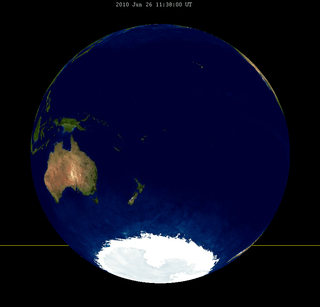 |
partial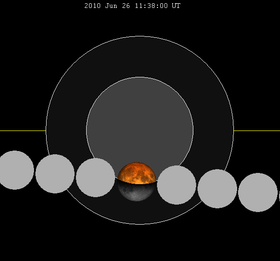 |
125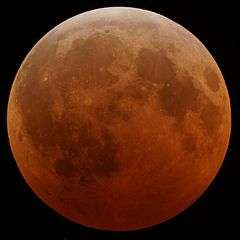 |
2010 Dec 21 |
total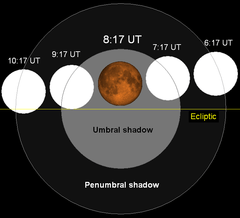 | |
130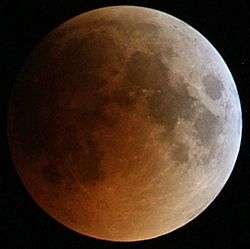 |
2011 June 15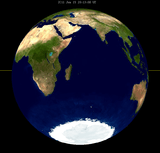 |
total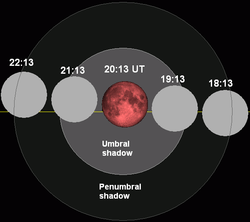 |
135 |
2011 Dec 10 |
total | |
140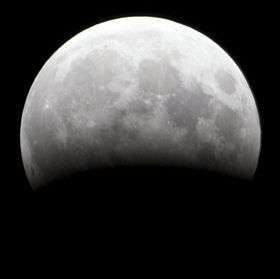 |
2012 June 04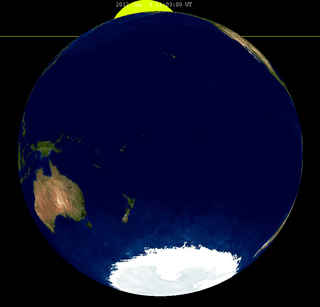 |
partial |
145 | 2012 Nov 28 |
penumbral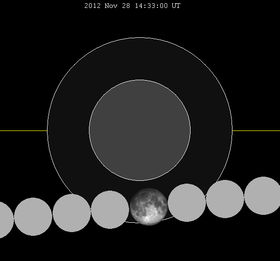 | |
| 150 | 2013 May 25 |
penumbral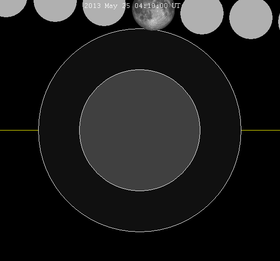 | ||||
| Last set | 2009 Aug 06 | Last set | 2009 Feb 9 | |||
| Next set | 2013 Apr 25 | Next set | 2013 Oct 18 | |||
See also
- List of lunar eclipses and List of 21st-century lunar eclipses
- File:2009-12-31 Lunar Eclipse Sketch.gif Chart
External links
- 2009 Dec 31 chart: Eclipse Predictions by Fred Espenak, NASA/GSFC
- Hermit eclipse: 2009-12-31
- Eclipse enthusiasts in Europe, Africa, Australia and Asia can celebrate New Year’s Eve by observing a partial lunar eclipse on December 31, 2009. The event’s duration will be about four hours.
| Wikimedia Commons has media related to Lunar eclipse of 2009 December 31. |

